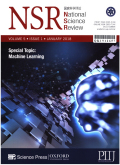- 钛学术文献服务平台 \
- 学术期刊 \
- 科教文艺期刊 \
- 科研管理期刊 \
- 国家科学评论(英文版)期刊 \
An exciting time for genome editing: an interview with David R.Liu
An exciting time for genome editing: an interview with David R.Liu
基本信息来源于合作网站,原文需代理用户跳转至来源网站获取
摘要:
In 1987, several Osaka University researchers discovered a special kind of clustered DNA repeats in bacteria.Within a few years, two other groups independently discovered the same phenomenon but no one knew its function at the time.Only a small handful of scientists studied this property from its discovery in 1987 to 2005.It was then that the function of these DNA repeats, which were named Clustered Regularly Interspaced Short Palindromic Repeats (CRISPR), was finally elucidated.Researchers found that CRISPR, when combined with its CRISPR-associated partner (Cas), is crucial for the functioning of the bacterial adaptive immune system against viral phage infection.CRISPR sequences can be transcribed into targeting RNA molecules, and Cas enzymes are guided by these RNAs to cut specific viral DNA loci, rendering resistance against the viral infection.

推荐文章
Chen-Lee-Liu方程的精确解
Chen-Lee-Liu方程
行波约化
精确解
孤立波解
多丝电离室(DAVID)系统对加速器射束的影响
多丝电离室
加速器
射束
影响
Liu混沌系统的LabVIEW仿真研究及其电路设计
Liu混沌系统
虚拟仪器
LabVIEW
自治混沌系统
内容分析
关键词云
关键词热度
相关文献总数
(/次)
(/年)
文献信息
| 篇名 | An exciting time for genome editing: an interview with David R.Liu | ||
| 来源期刊 | 国家科学评论(英文版) | 学科 | |
| 关键词 | |||
| 年,卷(期) | 2019,(3) | 所属期刊栏目 | |
| 研究方向 | 页码范围 | 452-454 | |
| 页数 | 3页 | 分类号 | |
| 字数 | 语种 | 英文 | |
| DOI | 10.1093/nsr/nwy146 | ||
五维指标
引文网络
引文网络
二级参考文献 (0)
共引文献 (0)
参考文献 (0)
节点文献
引证文献 (0)
同被引文献 (0)
二级引证文献 (0)
2019(0)
- 参考文献(0)
- 二级参考文献(0)
- 引证文献(0)
- 二级引证文献(0)
引文网络交叉学科
相关学者/机构
期刊影响力
国家科学评论(英文版)
主办单位:
中国科技出版传媒股份有限公司
出版周期:
月刊
ISSN:
2095-5138
CN:
10-1088/N
开本:
大16开
出版地:
北京市
邮发代号:
80-671
创刊时间:
2014
语种:
eng
出版文献量(篇)
773
总下载数(次)
0
总被引数(次)
431
期刊文献
相关文献
推荐文献

 免费查重
免费查重










